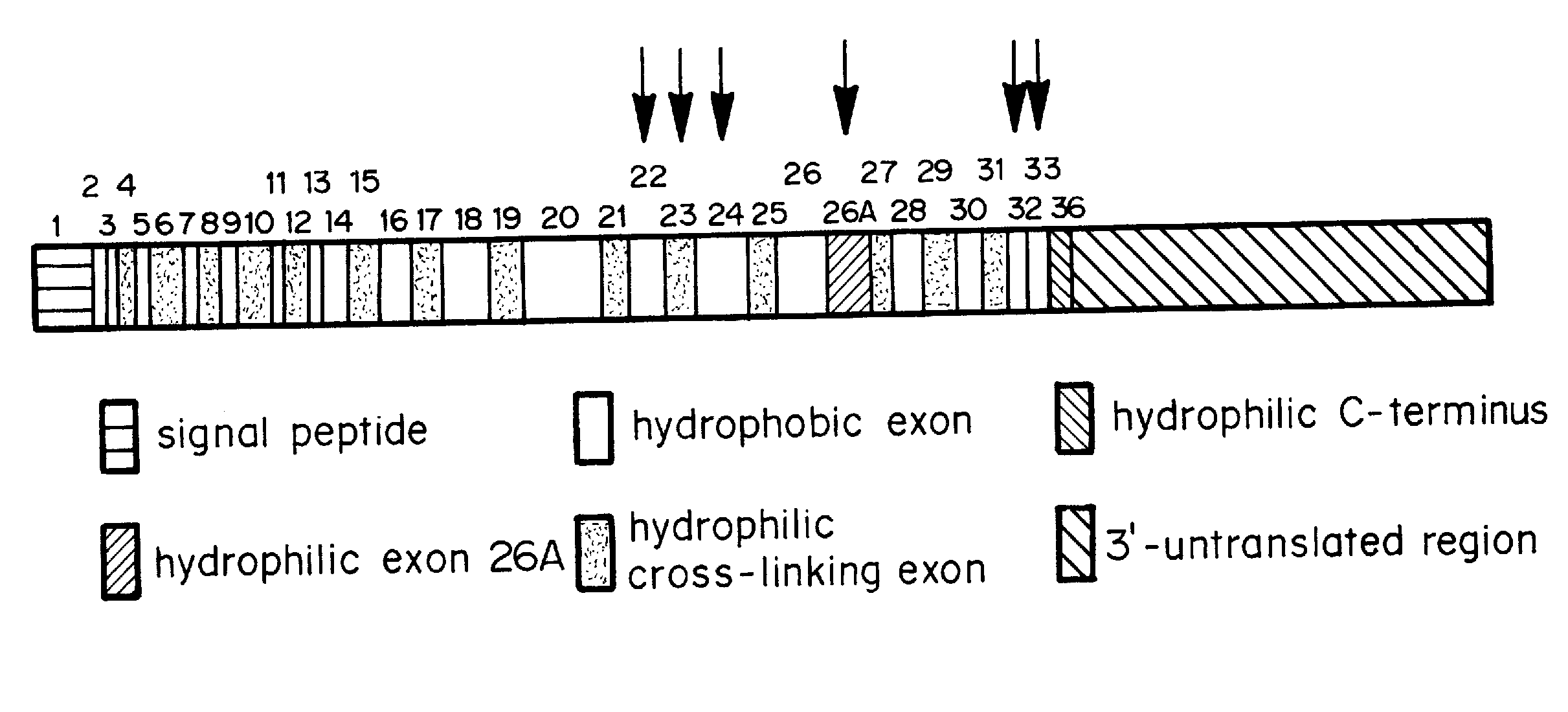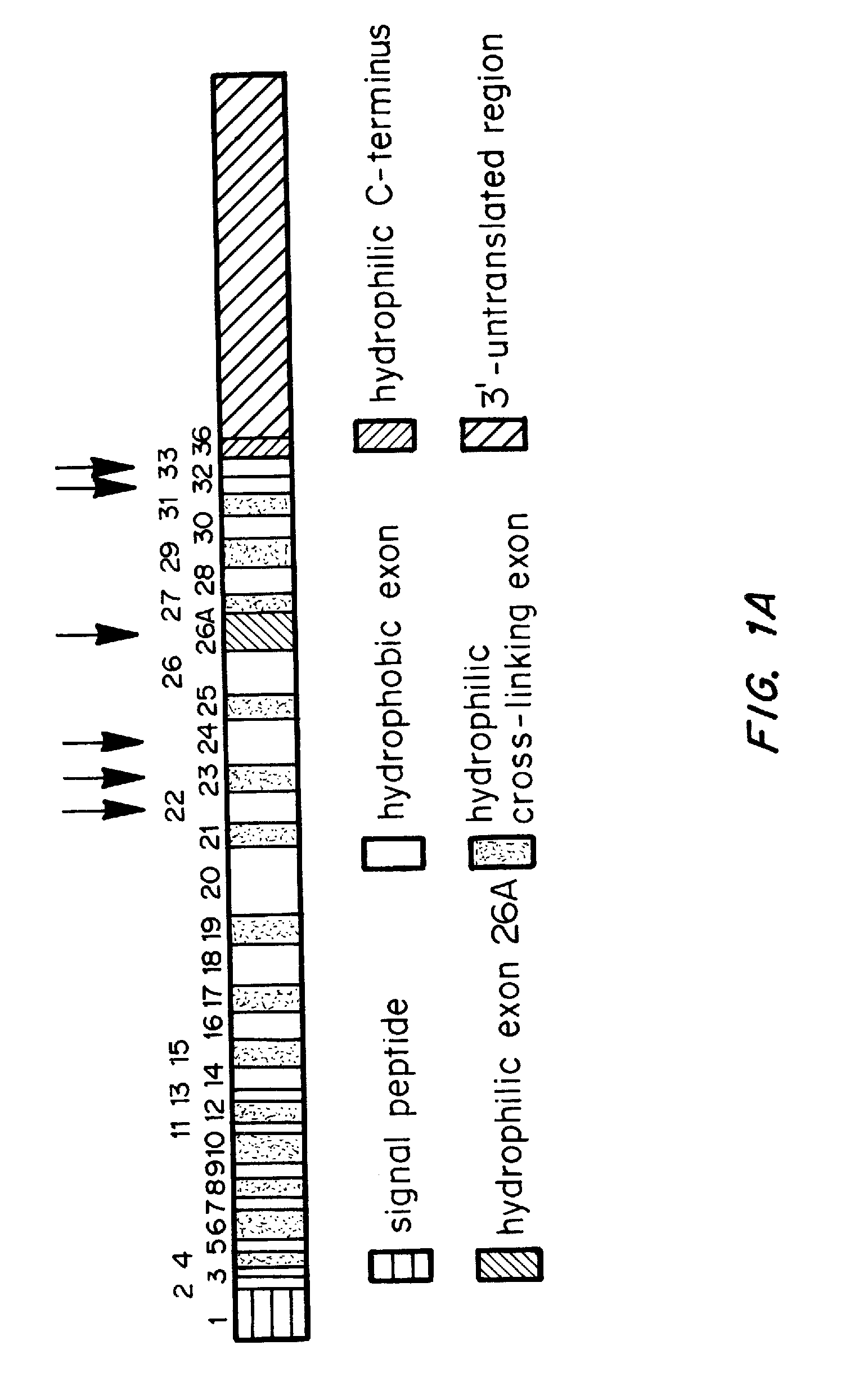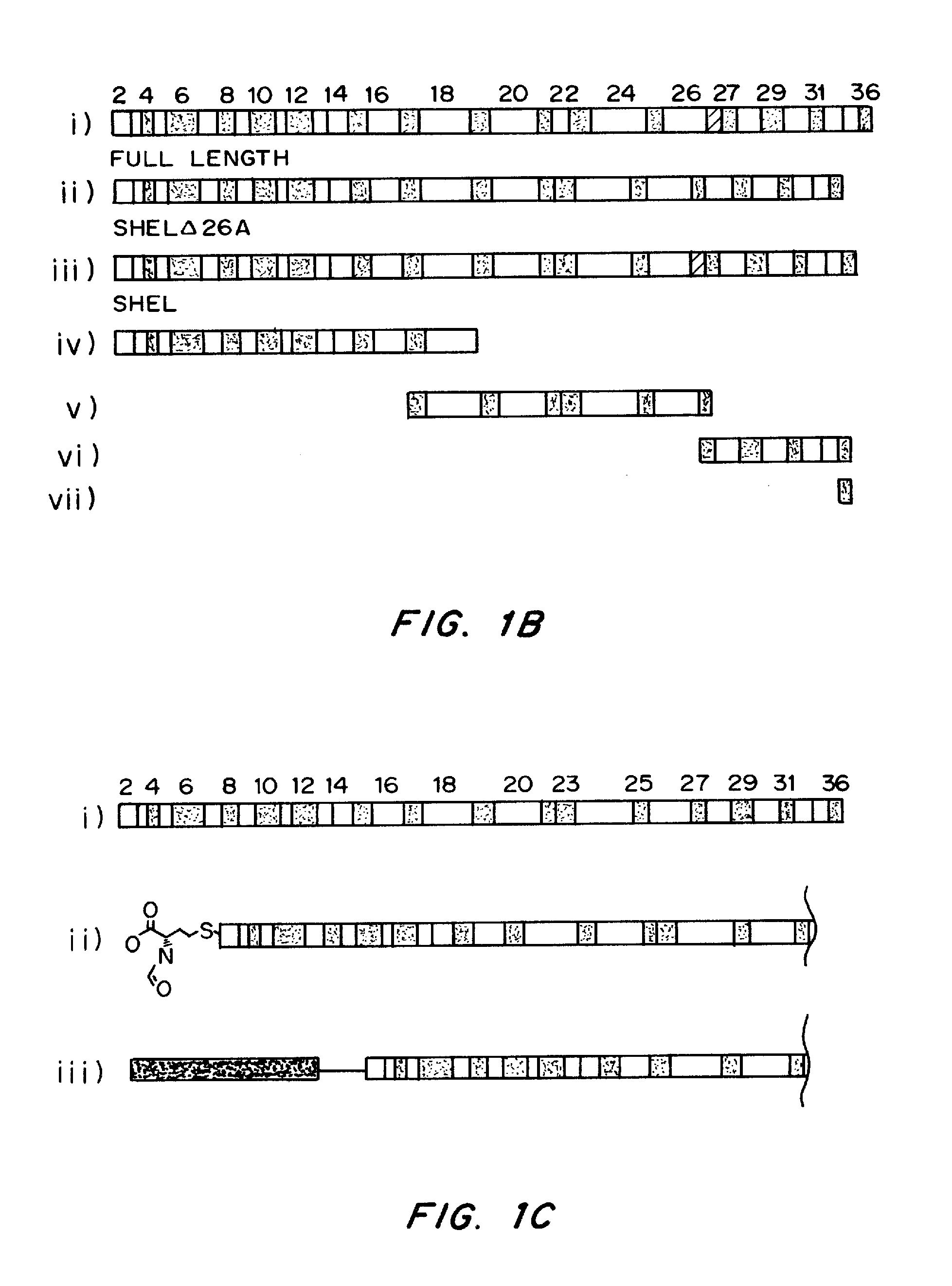Chemically and biologically modified medical devices
a biocompatible, chemically and biologically modified technology, applied in the direction of coatings, special packaging, packaging types, etc., can solve the problems of reduced blood flow damage to the heart muscle, and myocardial infarction (mi), and achieve the effect of increasing protease resistance and significantly reducing i
- Summary
- Abstract
- Description
- Claims
- Application Information
AI Technical Summary
Benefits of technology
Problems solved by technology
Method used
Image
Examples
example 1
Protoelastin Synthesis Using Chemical Cross-Linking of Tropoelastin
[0124]Tropoelastin was dissolved in cold phosphate buffered saline (PBS) at a concentration of 100 mg / ml. The amine reactive cross-linker, bis(sulfosuccinimidyl)suberate (BS3) was freshly prepared by dissolving in PBS immediately prior to use to a concentration of 100 mM. The solutions were mixed in a 1:10 ratio to give a final cross-linker concentration of 10 mM. The solution was poured into a mould, prior to placement at 37° C. to facilitate coacervation and cross-linking. The resulting protoelastin was washed repeatedly with PBS and stored in a sterile environment.
example 2
Protoelastin Synthesis Using HMDI
[0125]100 mg of tropoelastin was placed in a small weigh boat. In 10 aliquots, 100 μl of PBS was added to the tropoelastin slowly over several minutes. With the addition of each aliquot, a spatula was used to fold the solution into the protein. The tropoelastin eventually took on a gum-like consistency, which could be drawn into fibers and molded into shapes. To fix, the protein was submerged in a 10% 1,6-diisocyanatohexane (HMDI) in propanol solution and allowed to stand overnight. Elasticity was restored to the protoelastin by repeated washing in water and then in PBS.
example 3
Protoelastin Materials Prepared by Electrospinning
[0126]The electrospinning method was adapted from (Li et al., 2005). Briefly, a tropoelastin solution (5% w / v) was mixed with a copolymer (5% w / v) in 1,1,1,3,3,3-hexafluoropropanol. The homogenous solution was loaded into a 1 ml plastic syringe equipped with a blunt 18 gauge needle. Constant flow rates (0.5 ml / h) were achieved using a syringe pump (SP100 IZ Syringe Pump, Protech International) and the needle connected to the positive output of a high voltage power supply (ES30P / 20W, Gamma High Voltage Research Inc.). The metallic target for the fibers carried a negative charge, provided by a second power supply. Electrospinning was carried out with the needle voltage set at 20 kV, the target voltage set at −3 kV and with an air gap distance of approximately 15 cm. Electrospun fibers were cross-linked using a 10% HMDI solution in isopropanol and washed with water and PBS.
PUM
| Property | Measurement | Unit |
|---|---|---|
| Current | aaaaa | aaaaa |
| Current | aaaaa | aaaaa |
| Metallic bond | aaaaa | aaaaa |
Abstract
Description
Claims
Application Information
 Login to View More
Login to View More - R&D
- Intellectual Property
- Life Sciences
- Materials
- Tech Scout
- Unparalleled Data Quality
- Higher Quality Content
- 60% Fewer Hallucinations
Browse by: Latest US Patents, China's latest patents, Technical Efficacy Thesaurus, Application Domain, Technology Topic, Popular Technical Reports.
© 2025 PatSnap. All rights reserved.Legal|Privacy policy|Modern Slavery Act Transparency Statement|Sitemap|About US| Contact US: help@patsnap.com



